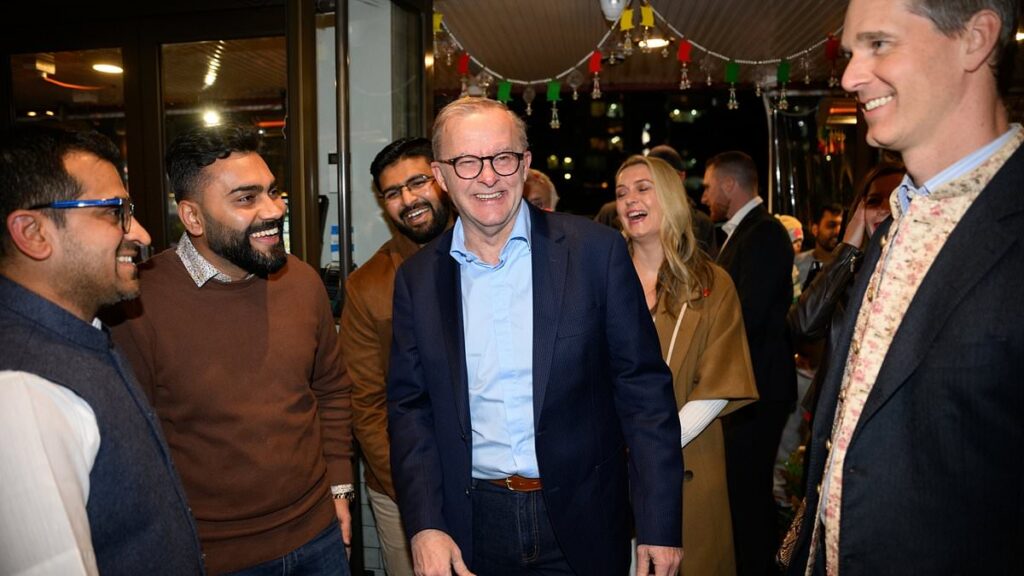An economist has linked Australia’s population growth with a surge in support for Labor and claimed the party is ‘importing future voters’ through its high immigration policy.
Australia hit a net overseas migration record of 528,000 in 2022-23, followed by 435,000 in 2023-24.
The Albanese government has forecast the rate for 2024-2025 to fall to 260,000 and then 225,000 the year after, although past budget figures have consistently underestimated net migration numbers.
The largest source of permanent migrants to Australia in 2023-24 was India, followed by China, the Philippines and Nepal.
Leith van Onselen, who is chief economist at MacroBusiness and previously worked at the Australian Treasury, has argued that the growing Indian community in Australia is a boon for Anthony Albanese.
Asked if there was any evidence that migrant-fuelled population growth had led to more support for Labor, Mr van Onselen told 2GB’s Luke Grant, ‘unfortunately there is’.
‘There was a post-2022 election survey done by Carnegie and Dowman, and that showed that 58 per cent of the Indian community voted for Labor versus 34 per cent for the Coalition,’ Mr van Onselen said.
‘And the Indian community is now our largest immigration source.
Mr van Onselen said Labor is incentivised to maintain a high immigration policy because ‘it’s effectively importing future voters’
‘It seems that that community votes overwhelmingly for Labor.’
After this month’s election, social media was flooded with videos of Indian students and migration agents ‘celebrating wildly Labor’s election victory, because they know that the Albanese government’s a bit of a soft touch on immigration’.
‘And obviously with Labor being re-elected, it lessens the chance of immigration cuts, it means more international students. So that community was obviously celebrating,’ Mr van Onselen said.
‘Labor is incentivised to maintain a high immigration policy because it’s effectively importing future voters.’
He said the Coalition had ‘shot themselves in the foot’ because much of the immigration to Australia over the past 20 years had happened under Coalition governments, and they had only succeeded in boosting support for their political opponents.
‘They effectively imported a whole bunch of people who were then more likely to vote for Labor… They probably did it inadvertently.’
Peter Dutton made a series of policy backflips on immigration during the Coalition’s failed election campaign.
Eventually, he vowed to cut net migration to 160,000, compared to the Albanese government’s forecast of 260,000.
Leith van Onselen (pictured) has argued that the growing Indian community in Australia is a boon for Anthony Albanese
Mr van Onselen said monthly arrivals and departures data from the Australian Bureau of Statistics showed migration was trending up again.
About 188,000 permanent and long-term arrivals landed in Australia in the first quarter of 2025, he said.
The continued high level of immigration was intended to stimulate economic growth in the absence of any gains in productivity but had left Australia in a per-capita recession for almost two years to the end of 2024.
The surging numbers of arrival has also been identified by economists as the main factor in driving up real estate prices to some of the most expensive in the world as demand far outstrips supply.
‘It looked like migration was coming down at the end of last year – it now looks like it’s picked back up again,’ Mr van Onselen said.
‘The whole housing equation in Australia just does not add up. We’re fire-hosing in more and more people every year, we never have been able to build enough homes, and the government seems to wonder why we have this perpetual crisis.
‘And it’s primarily been driven by the federal government.’

